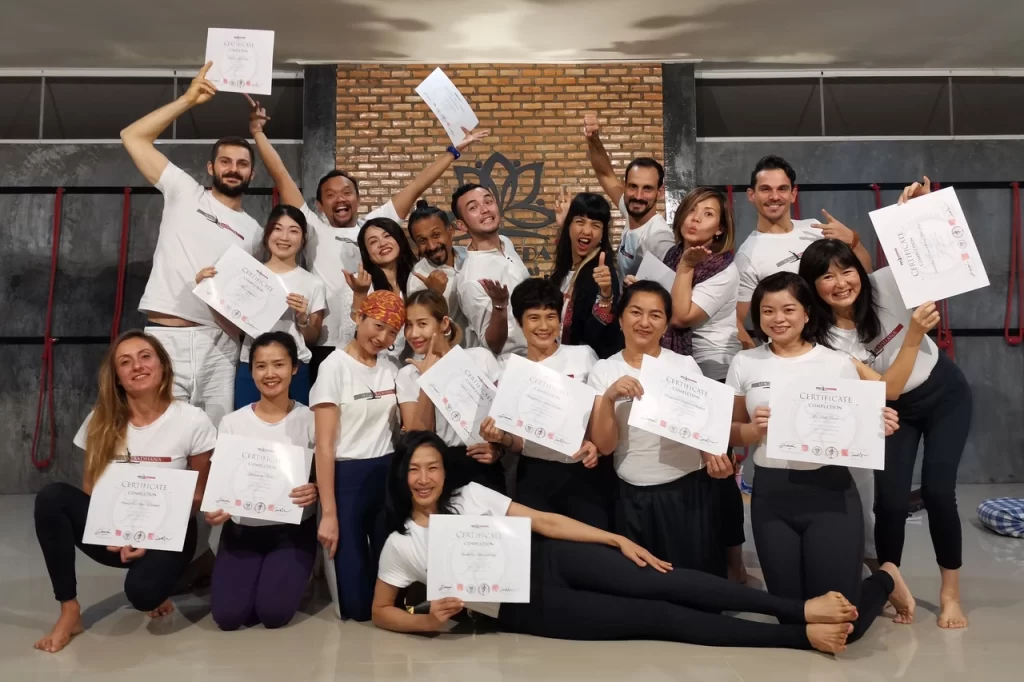Yoga is a holistic practice that has a range of elements, each contributing to the different senses and parts of human body, ensuring overall well-being of an individual. If you are going to dive into the world of yoga, you need to understand the various elements of its to know the complete benefits of this ancient and transformative discipline. From physical postures to breath control, ethical guidelines and meditation, the elements of yoga create a comprehensive framework to achieve peace of mind, body, and spirit.
Asanas (Physical Postures):
The physical postures or you can call them asanas, are the most visible and well-known element of yoga without a doubt. These poses are crucial to improve strength, balance and flexibility of your physical body. From the warrior poses to downward-facing, each asana serves a specific purpose in enhancing the practitioner’s physical health. The practice of performing yoga poses not helps strengthen and flex the body. Also encourages individuals to be mindful as they focus on the present moment, during the movements.
Dhyana (Concentration):
Dhyana, also known as concentration in yoga philosophy shares similarities with meditation but emphasizes focus, on a point or object. Whether it’s a repeated phrase focusing on the breath or fixating, on an image engaging in dhyana fosters self-control and nurtures a deepened state of focus. Through refining the skill to guide and maintain attention people can encounter enhanced lucidity, enhanced judgment skills, and an expanded ability to embrace mindfulness in their day-to-day existence.
Meditation:
Meditation is an element of yoga that entails training the mind to achieve a state of awareness and inner tranquillity. While meditation can take forms like seated meditation, mindfulness practices or guided visualization its ultimate objective remains consistent – quieting fluctuations and experiencing inner peace. Incorporating meditation into a yoga enhances clarity reduces stress levels and promotes self-understanding.
Pranayama (Breath Control):
Breath control, known as pranayama in yoga, is an aspect that involves controlling one’s breathing. The word “Prana” refers to life force or vital energy while “Yama”, refers to control. Using breathing techniques, practitioners use the power of their breath to calm the mind, increase vitality, and establish a connection between your body and mind. Pranayama serves as a link between the mental dimensions of yoga.
Yamas (Ethical Guidelines):
The Yamas encompass a set of principles that serve as guiding values, for those living a yogic lifestyle. These principles include Ahimsa (nonviolence) Satya (truthfulness) Asteya (non-stealing) Brahmacharya (moderation) and Aparigraha (non-attachment). They form the ethical foundation for individuals on the path of yoga fostering the development of character traits and nurturing harmonious relationships with oneself and others.
Niyamas (Personal Observances):
Following the yamas are the niyamas, which consist of observances or self-disciplines. These niyamas include swachha (cleanliness) Santosha (contentment) Tapas (self-discipline) Svadhyaya (self-study) and Ishvara Pranidhana (surrendering yourself to ultimate god). The niyamas guide practitioners in achieving habits of engaging in self-reflection and establishing a connection with their inner selves.
Samadhi (Union):
Samadhi representing the goal of yoga signifies a state of spiritual absorption or enlightenment. It is often described as experiencing union with the divine or merging one’s consciousness with the universal consciousness. While attaining samadhi is regarded as rare and advanced its pursuit remains a guiding principle for individuals, on their journey.
Bandhas (Energy Locks):
Bandhas, also known as energy locks play a role in the practice of yoga. They involve engagements that help regulate and direct the flow of prana, which is the life force. The three primary bandhas are Mula Bandha (the root lock) Uddiyana Bandha (the lock) and Jalandhara Bandha (the throat lock). By incorporating these bandhas into their yoga practice individuals can enhance the aspect of yoga. Promote the unrestricted flow of vital energy, throughout their bodies.
Chakras (Energy Centers):
According to the teachings of yoga the chakras serve as energy centers, within the body and are situated along the spine. These energy centers, which number seven in total each correspond to qualities and aspects of consciousness. They extend from the base of the spine up to the crown of the head. Through practicing yoga, which includes asanas (postures) and meditation individuals strive to harmonize and activate these energy centers. Here are the names of these seven chakras;
- The Root Chakra (Muladhara)
- The Sacral Chakra (Svadhisthana)
- The Solar Plexus Chakra (Manipura)
- The Heart Chakra (Anahata)
- The Throat Chakra (Vishuddha)
- The Third Eye Chakra (Ajna)
- The Crown Chakra (Sahasrara)
Mudras (Gestures):
Mudras are symbolic hand gestures employed during meditation to channel and direct energy. Each mudra holds its significance and purpose influencing how energy flows within both body and mind. Incorporating mudras into ones yoga practice adds a yet dimension to their overall experience with yoga. Ultimately the effects of mudras depend on how they connect movements, with aspects within our bodies.
Yoga encompasses a range of aspects, including the postures known as asanas the principles of the yamas and niyamas breath control, through pranayama and ultimately striving for samadhi. Each of these elements plays a role, in creating a rounded yoga practice.
By embracing all these elements individuals can embark on a journey that extends beyond the physical benefits. It helps cultivate clarity, emotional equilibrium and spiritual development. So, whether you are a seasoned yogi or a beginner taking your first steps on the mat, exploring and integrating these elements into your practice can lead to a more fulfilling and enriching life.
Connect with us

